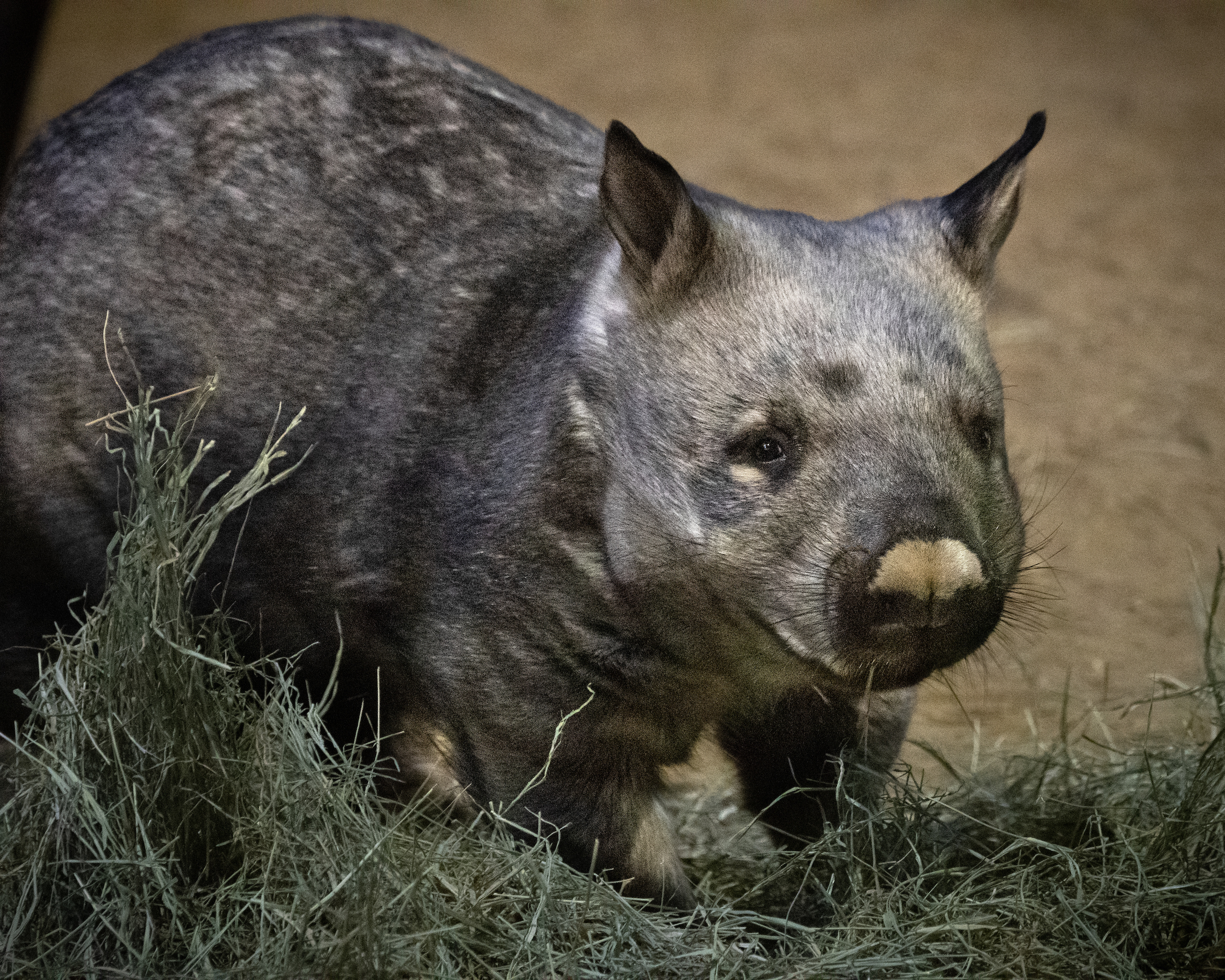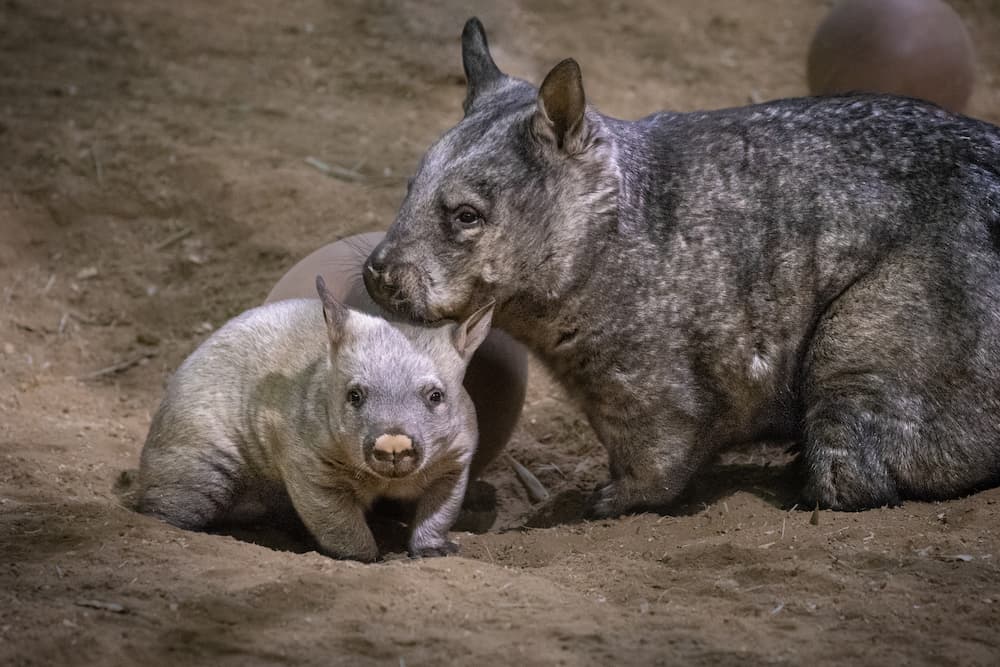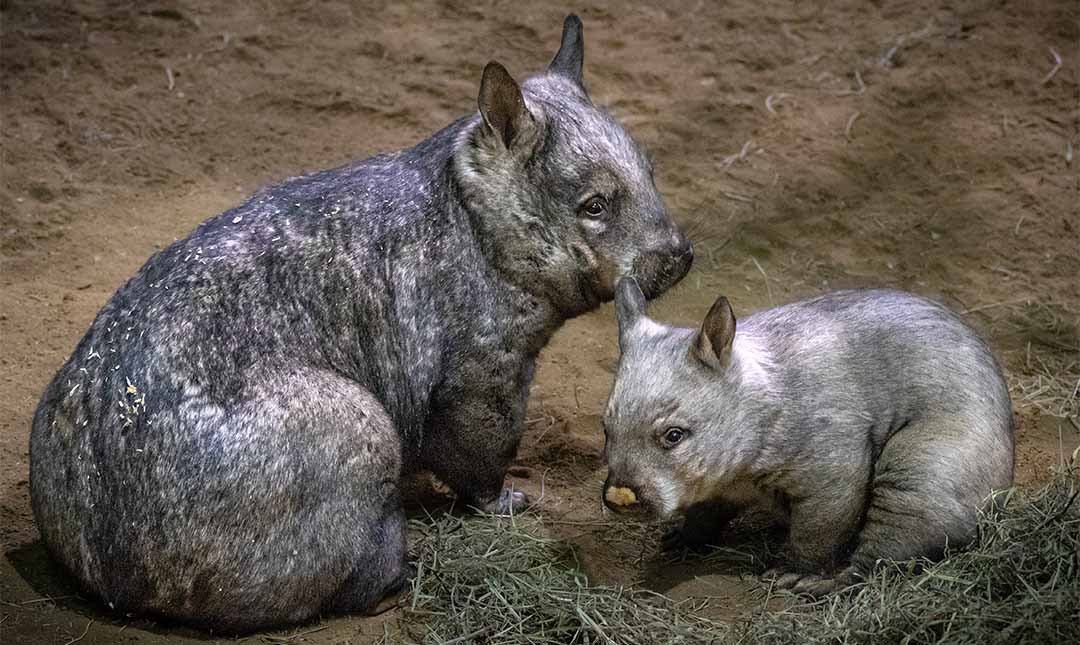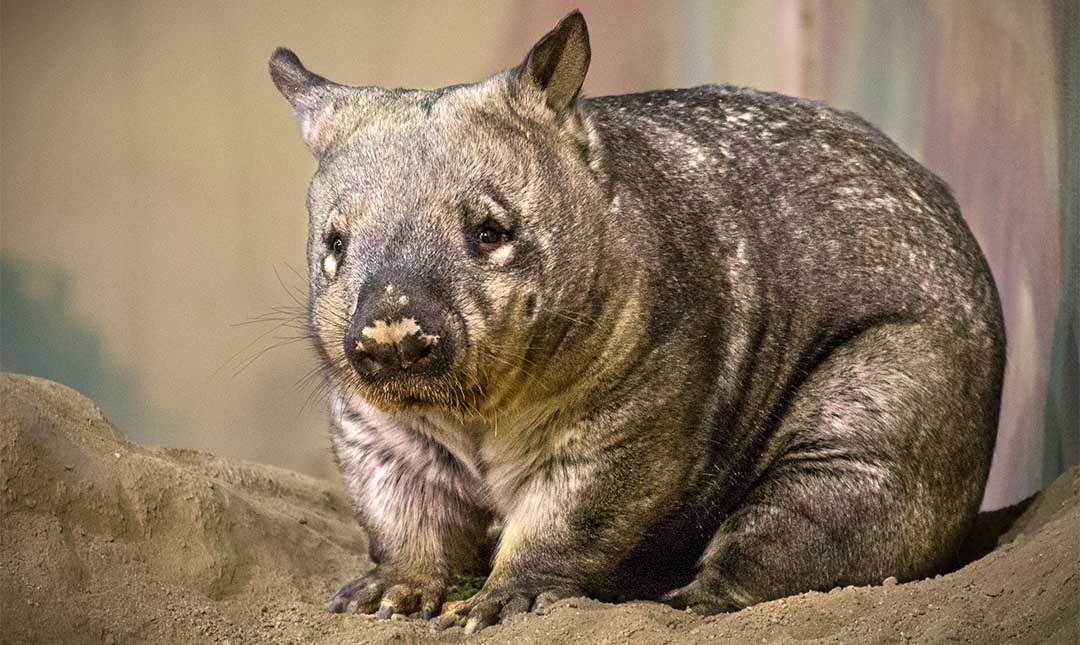About
Wombats resemble small bears, but they are actually marsupials closely related to koalas and native only to Australia. Nicknamed “bulldozers of the bush,” wombats construct huge burrows with complex tunnel systems nearly two feet wide and up to 100 feet long. Burrows have many entrances and exits, several side tunnels, and multiple chambers. Wombats dig with their forepaws using long, flattened claws to scratch and fling soil behind them. Strong incisor teeth cut through roots. They can excavate several feet of tunnel in a single day. The piled-up dirt is bulldozed clear of the burrow. Each burrow system may serve as a home to 5-10 wombats. Wombats are nocturnal. They spend most of the day in their burrows to avoid the heat of the day and emerge at night to feed on vegetation.
When you spend a lot of time in the dirt, it makes sense to have a pouch that opens toward the tail to ensure any flying dirt does not smother your baby joey. Female wombats have a single embryonic young the size of a jellybean after a pregnancy of only about 20 days. The joey climbs into the pouch, where it continues to develop for the next six to seven months. Joeys leave the pouch at about nine months of age and follow their mothers for about a year until they are weaned. Wombats will not breed in drought conditions when food is scarce. Wombats may look slow and cumbersome, but they can run 25 miles per hour for short distances. Predators include dingoes and Tasmanian devils. If threatened, they will dive into a nearby tunnel using their leathery, thick-skinned rump to block the entrance. If pursued, a wombat may use its powerful legs to deliver a nasty kick or crush the predator’s skull against the roof. Wombat metabolism is very slow. It can take up to two weeks to digest a meal, but this ensures that they absorb maximum nutrition from their food. Wombats produce cube-shaped feces and use it to mark their territory. It is thought that the square shape keeps these poop markers from rolling away.
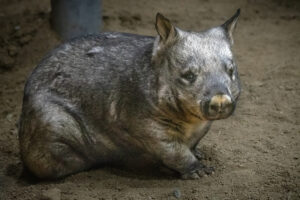
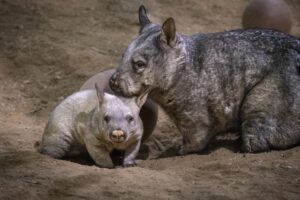
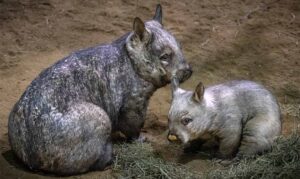
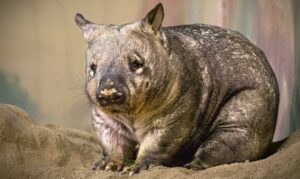
Habitat
Southern hairy-nosed wombats are found from southern New South Wales to south-eastern Western Australia.
Diet
Herbivorous, wombats graze on grasses, low vegetation, and roots. At the Zoo, our wombats eat a mix of carrots, yam, pellets, and hay.
Physical Characteristics
Southern hairy-nosed wombats are most often gray or brown, 2-3 feet in length, weigh from 40-70 pounds, and have a small tail that is between 1 and 2 inches. Because wombats spend a good portion of their time digging, the pouch opens towards the tail to ensure that soil does not smother the joey. They have continuously growing teeth so that they can easily eat coarse grasses. Lifespan in the wild is up to 15 years. In human care their lifespan averages 24 years.

